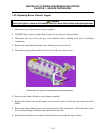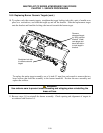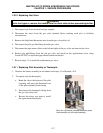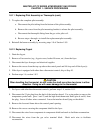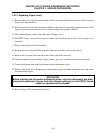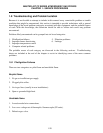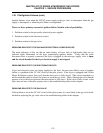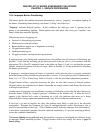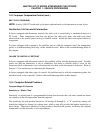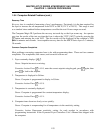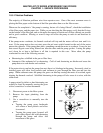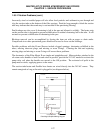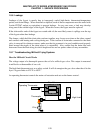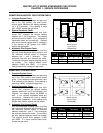
MASTER JET CF SERIES ATMOSPHERIC GAS FRYERS
CHAPTER 1: SERVICE PROCEDURES
1-23
1.9.2 Improper Burner Functioning (cont.)
Fluctuating flame intensity is normally caused by either improper or fluctuating incoming gas
pressure, but may also be the result of variations in the kitchen atmosphere. Verify incoming gas
pressure in the same way as for "popping", discussed in the preceding paragraphs. Variations in the
kitchen atmosphere are usually caused by air conditioning and/or ventilation unit air-exchange. As
the systems start and stop, the pressure in the kitchen may change from positive or neutral to
negative, or vice versa. They may also cause changes in airflow patterns that may affect flame
intensity.
Flames "rolling" out of the fryer are usually an indication of negative pressure in the kitchen. Air
is being sucked out of the fryer enclosure and the flames are literally following the air. If negative
pressure is not the cause, check for high burner manifold gas pressure in accordance with the
procedures in Section 1.3. An obstructed flue, which prevents the fryer from properly exhausting,
may also be the cause.
An excessively noisy burner, especially with flames visible above the flue opening, may indicate
that the burner gas pressure is too high, or it may simply be that the gas valve vent tube is blocked.
If the gas pressure is correct and the vent tube is unobstructed, the gas valve regulator is probably
defective.
Occasionally a burner may apparently be operating correctly, but the fryer has a slow recovery rate.
[The recovery rate is the length of time required for the fryer to increase the oil temperature from
250°F to 300°F (121°C to 149°C)]. Low burner manifold pressure and/or misaligned or missing
deflector targets are usually the main causes. If both of these causes are ruled out, the probable
cause is a gas valve regulator that is out of adjustment. See Section 1.3 to adjust regulator.
1.9.3 Improper Temperature Control
Temperature control, including the melt cycle, is a function of several interrelated components, each
of which must operate correctly. The principle component is the thermostat (in thermostat control
units) or the temperature probe (in fryers equipped with computers). Depending upon the specific
configuration of the fryer, other components may include the interface board and the computer.
Improper temperature control problems can be categorized into melt cycle problems and failure to
control at setpoint problems.



